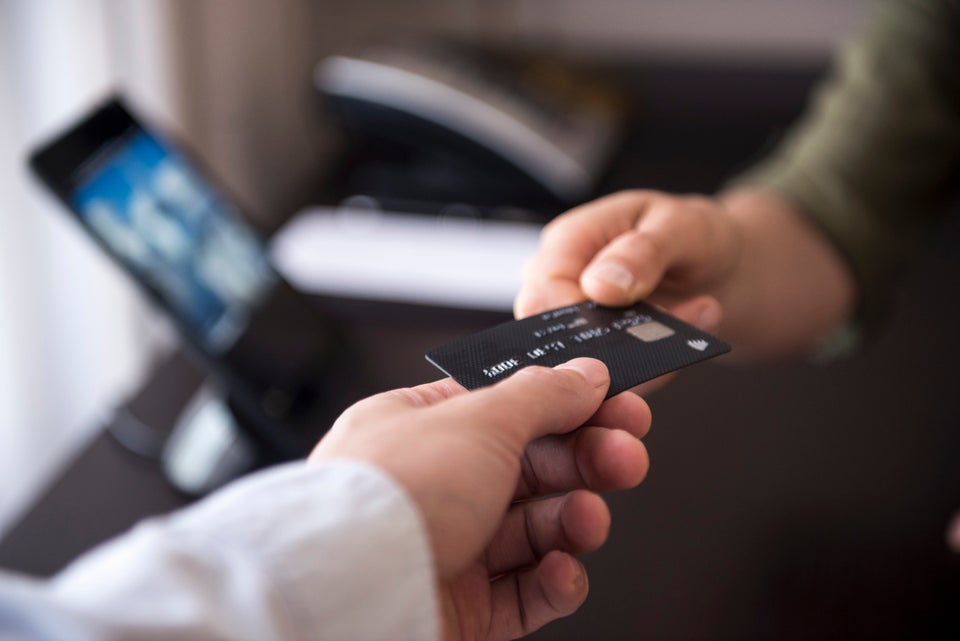A second round of stimulus checks is hitting bank accounts and mailboxes across the country. The $600 payment might seem pretty paltry considering that we’ve been struggling through the coronavirus pandemic for nearly a year. But it’s something. And if your credit took a hit over the past year, that stimulus check could help you improve your credit score.
Here’s how to use your stimulus money to build good credit.
Pay your bills ― but sign up for one of these apps first.
The best thing you can do for your credit is pay all your bills in full and on time. That’s because payment history makes up 35% of your credit score. Missing even one payment can knock your score down by quite a bit, while keeping current on payments will boost your score over time.
If you’re in danger of falling behind on a loan payment, utility bill or other monthly expense, you should use your stimulus money to pay it before the due date.
But even if you aren’t behind on your bills, you can still use your stimulus money strategically. Although missing just about any bill will result in a ding to your credit, you only reap the benefits of a positive payment history for loans, credit cards and other lines of credit. Paying your landlord or cellphone company on time every month won’t do anything to boost your credit, in most cases.
However, there are a few apps on the market that will report such non-credit payments to the credit bureaus, allowing you to build a positive credit history. Rental Kharma, for instance, will report your rent payments to TransUnion (and soon, Equifax as well) for a fee. Perch syncs with your bank account and reports payments on utility and subscription accounts, such as Hulu, to the credit bureaus for free. So if your credit score could use some help, consider signing up for one of these apps and using your stimulus money to pay bills that will be reported to the credit bureaus.
Pay down a debt.
The amount of debt you owe compared to the total amount of credit you have available is the next most important credit factor, making up 30% of your score. This is also known as your credit utilization. In addition to total debt, credit utilization also considers the number of accounts you have with balances, amounts owed on different types of debt (such as a car loan vs. credit card) and your utilization rate on credit cards.
“The more available credit you use, the riskier you appear to lenders since it may be a sign that you’re overextended or experiencing financial problems and might not be able to repay your balances,” explained Leslie Tayne, a debt resolution attorney and founder of Tayne Law Group.
For instance, if you have a credit card with a $2,000 credit limit and have a $1,000 balance, that puts the card at a 50% utilization rate. “It’s recommended to keep utilization rates under 30% for higher credit scores,” she said. If you applied the $600 stimulus check toward your $1,000 balance, it would lower your utilization rate to 20% and likely increase your credit score.
Open a secured card.
It can be tough to get your hands on a credit card or loan if your credit score isn’t great. And that can be especially frustrating since you need to use credit to build credit (hey, we didn’t make the rules).
If you’re struggling to get approved for a credit card, try opening a secured card instead. These cards work the same as a traditional credit card except you “secure” the line of credit with an upfront deposit. Once you’ve used your card responsibly for several months, you can get your deposit back and even be upgraded to a regular credit card. In the meantime, your activity is reported to the credit bureaus and you build up a positive payment history.
If you go this route, your stimulus check should be enough to cover the deposit on a secured card. In fact, some secured cards require deposits as small as $200, noted Howard Dvorkin, a personal finance expert and chairman of Debt.com. “That allows someone to not only build credit but save some of their stimulus money for bills or an emergency fund,” he added.
Take out a credit-builder loan.
Another way to build up good credit when you have a limited credit history is to take out a credit-builder loan. But don’t let the “loan” part deter you; these tools actually let you build credit without going into debt.
Here’s how they work: You start by “borrowing” a small sum of money, usually between $300 and $1,000. However, the bank secures those funds for you in a savings account or CD. You make payments toward the loan in regular installments over the course of about a year, and once it’s repaid, the funds in the account are released back to you along with any interest that might have accrued. Keep in mind that there may be an administrative fee required to open a credit-builder loan. Credit unions are a great place to look for low-cost options.
You can also try an online option such as Self, which offers credit-builder accounts. These work similarly, allowing you to take out a credit-builder loan through one of Self’s bank partners for a $9 fee, and then pay it back over one to two years. Payments are reported to all three credit bureaus.
